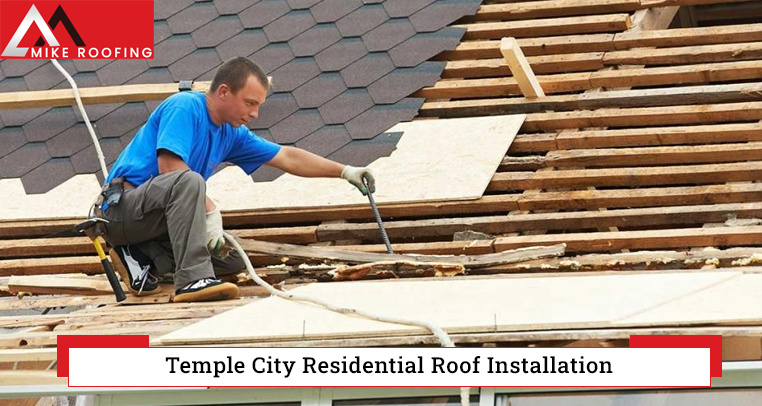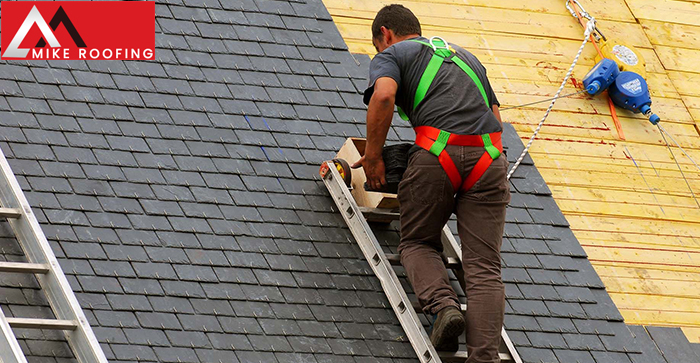When it comes to Temple City residential roof installation, it is important to know about the current roofing trends. Here are some of the trends that have become quite popular

Homeowners are increasingly opting for environmentally friendly roofing materials that offer energy-saving benefits. This includes cool roofing systems that reflect heat and reduce energy consumption, as well as eco-friendly options like metal roofing or recycled materials.
Architectural shingles provide a dimensional and textured appearance, mimicking the look of more expensive roofing materials like slate or wood shakes. They offer enhanced durability and are available in a wide range of colors and styles, allowing homeowners to achieve a customized and visually appealing roof.
While traditional neutral shades remain popular, some homeowners are opting for bolder and more vibrant colors for their roofs. This trend allows for personalization and can create a striking visual statement.
Homeowners are increasingly seeking roofing materials that require minimal maintenance and upkeep. This includes options like composite or metal roofing, which are known for their durability and resistance to rot, pests, and weathering.
Choosing the right roof design is also important for Temple City Residential Roof Installation. Our roofing company can help you with a wide range of choices, call us now. Here are some of the factors that you should consider
| Factor | Description | Ideal Option |
|---|---|---|
| Climate | Consider the local climate and weather patterns. Different roof designs perform better in specific climates. | For hot climates, a cool roof with reflective materials. |
| Architectural Style | Ensure the roof design complements the overall architectural style of the building. | A gable or hip roof for traditional styles, a flat or shed roof for modern styles |
| Durability | Evaluate the expected lifespan and durability of different roof materials. | Metal roofs or concrete tiles for long-lasting durability. |
| Budget | Consider the available budget for roof construction and maintenance. | Asphalt shingles or composite materials for cost-effective options. |
| Energy Efficiency | Choose a roof design that promotes energy efficiency and reduces heating or cooling costs. | Cool roofing materials for enhanced energy efficiency. |
| Aesthetics | Consider the visual appeal and desired look of the roof. | Wood shakes or slate tiles for a rustic or upscale appearance. |
| Maintenance | Evaluate the level of maintenance required for different roof designs | Low-maintenance options like metal or composite roofs. |
Also known as tar paper, asphalt-saturated felt is a traditional and cost-effective underlayment option. It is made from a base material (often fiberglass or organic) saturated with asphalt. It provides basic protection against water infiltration and serves as a temporary barrier during roof installation.
Synthetic underlayment is a modern alternative to asphalt-saturated felt. It is typically made from polypropylene or polyester materials, offering superior strength, durability, and resistance to moisture. Synthetic underlayment is lightweight, easy to handle, and provides better traction for roofers during installation.
This type of underlayment combines the benefits of asphalt and rubber materials. It consists of a layer of asphalt modified with rubber polymers, which enhances its flexibility, durability, and resistance to extreme temperatures. Rubberized asphalt underlayment offers excellent waterproofing properties and can be self-adhering or mechanically fastened
Peel-and-stick underlayment is a self-adhering option that provides enhanced protection against water penetration. It has a sticky backing that bonds directly to the roof deck, creating a watertight seal. This type of underlayment is particularly useful in areas prone to high wind or heavy rainfall.
Here are the different methods used for Temple City Residential Roof Installation

This is the most traditional and common method of roof installation. It involves securing the roofing material (such as asphalt shingles or wood shakes) to the roof deck using nails. The shingles are overlapped and nailed down in rows, starting from the bottom of the roof and working upwards.
Some roofing materials, such as metal panels or synthetic tiles, have interlocking mechanisms that allow for a secure and efficient installation. The panels or tiles are designed to fit together, creating a unified and watertight roof surface. Interlocking systems provide enhanced durability and resistance to wind and weather
Certain roofing materials, like single-ply membranes or some synthetic roofing systems, may be installed using adhesive or bonding agents. The adhesive is applied to the roof deck, and the roofing material then adheres to the surface. This method provides a seamless and secure installation.
Roofing systems, such as built-up roofing (BUR) or modified bitumen systems, involve multiple layers of materials and are often installed using specialized techniques. These systems may require the application of hot asphalt or the use of torches for heat-sealing.
The structural components of the roof, such as trusses or rafters, play a crucial role in supporting the roof and determining its shape. These elements are typically pre-built or constructed on-site and are carefully installed to provide the framework for the roof structure.
The duration of a roof installation can vary depending on the size of the roof, the complexity of the design, and the weather conditions. On average, it can take anywhere from a few days to a couple of weeks to complete a residential roof installation.
In some cases, it may be necessary to replace or repair the roof decking if it is damaged or deteriorated. This will be assessed during the roof inspection and discussed with you.
Yes, we will help you handle the permits required for roof installation. The team is familiar with local regulations and will ensure that the necessary permits are obtained before starting the project.
Yes, most roofing materials come with manufacturer warranties. Our team will discuss warranty details and help you understand the coverage and duration.
Yes, in most cases, we will clean up the job site after the installation is complete. This includes removing debris, nails, and any leftover materials.
Regular roof maintenance is important to prolong the lifespan of your roof. This may include inspections, cleaning gutters, removing debris, and addressing any issues promptly. Your roofing contractor can provide guidance on proper maintenance practices